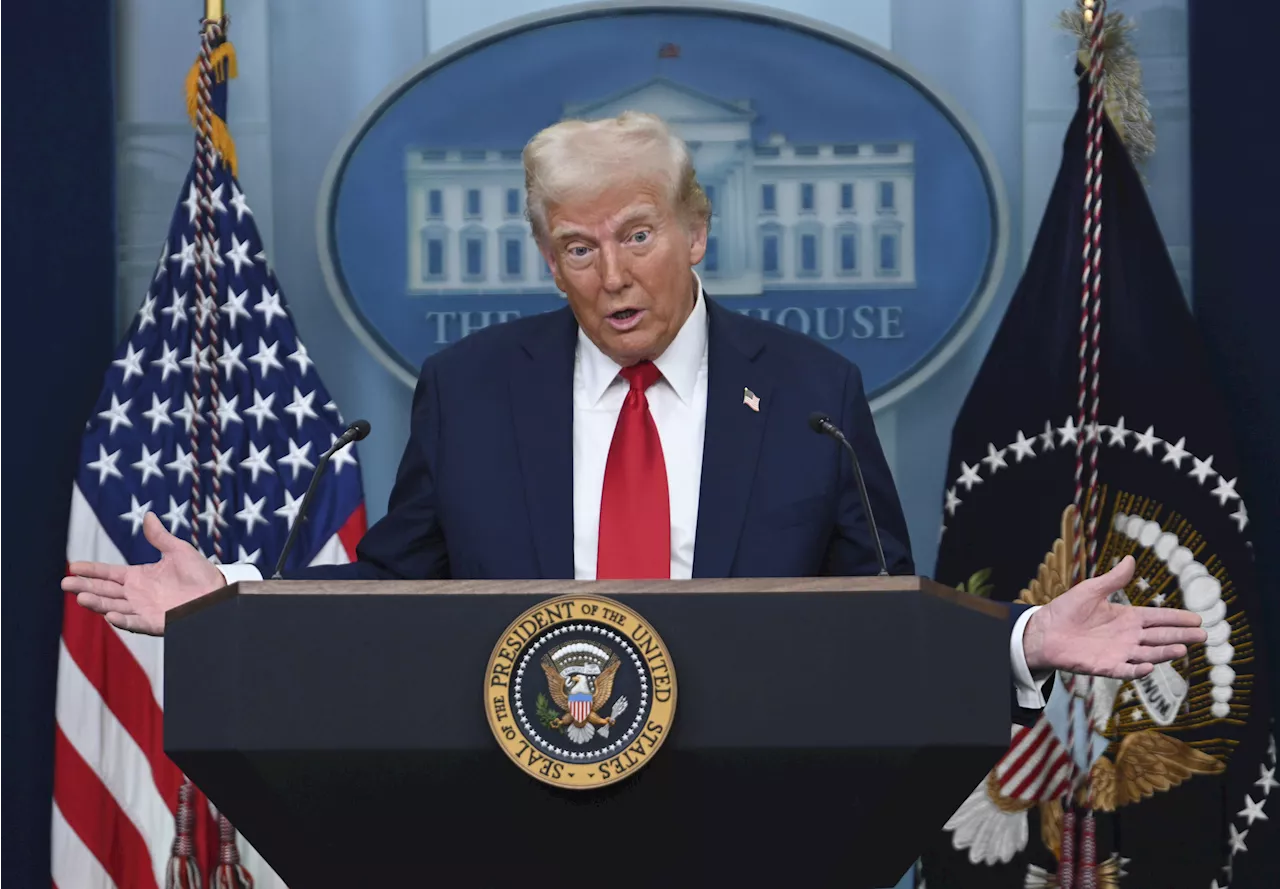This article delves into the complexities of tariffs, exploring their definition, history, economic impacts, and the ongoing controversies surrounding their use in international trade.
After making promises to impose tariffs on goods imported from Mexico, Canada, and China throughout his campaign, Trump and his White House confirmed on Friday that the first round of tariffs will begin on Saturday. Tariffs are currently a hot topic in the news. Here's a breakdown of what they are and what you need to know about them: Tariffs are typically charged as a percentage of the price a buyer pays a foreign seller.
In the United States, tariffs are collected by Customs and Border Protection agents at 328 ports of entry across the country. U.S. tariff rates vary: They are generally 2.5% on passenger cars, for instance, and 6% on golf shoes. Tariffs can be lower for countries with which the United States has trade agreements. For example, most goods can move freely among the United States, Canada, and Mexico under the USMCA trade agreement. The U.S. president, a proponent of tariffs, insists that they are paid for by foreign countries. However, in reality, it is importers — American companies — that pay tariffs, and the money goes to the U.S. Treasury. Those companies, in turn, typically pass their higher costs on to their customers in the form of higher prices. That’s why economists say consumers ultimately end up footing the bill for tariffs. Still, tariffs can hurt foreign countries by making their products pricier and harder to sell abroad. Foreign companies might have to cut prices — and sacrifice profits — to offset the tariffs and try to maintain their market share in the United States. Yang Zhou, an economist at Shanghai’s Fudan University, concluded in a study that Trump’s tariffs on Chinese goods inflicted more than three times as much damage to the Chinese economy as they did to the U.S. economy. Trump has stated that tariffs will create more factory jobs, shrink the federal deficit, lower food prices, and allow the government to subsidize childcare. The United States in recent years has gradually retreated from its post-World War II role of promoting global free trade and lower tariffs. This shift has been a response to the loss of U.S. manufacturing jobs, widely attributed to unfettered free trade and an increasingly powerful China. By raising the price of imports, tariffs can protect home-grown manufacturers. They may also serve to punish foreign countries for committing unfair trade practices, like subsidizing their exporters or dumping products at unfairly low prices. Before the federal income tax was established in 1913, tariffs were a major revenue driver for the government. From 1790 to 1860, tariffs accounted for 90% of federal revenue, according to Douglas Irwin, a Dartmouth College economist who has studied the history of trade policy. Tariffs fell out of favor as global trade grew after World War II. The government needed vastly bigger revenue streams to finance its operations. In the fiscal year that ended Sept. 30, the government collected around $80 billion in tariffs and fees. That’s a trifle next to the $2.5 trillion that comes from individual income taxes and the $1.7 trillion from Social Security and Medicare taxes. Tariffs can also be used to pressure other countries on issues that may or may not be related to trade. In 2019, for example, Trump used the threat of tariffs as leverage to persuade Mexico to crack down on waves of Central American migrants crossing Mexican territory on their way to the United States. If another country tries to start a war, he said he’d issue a threat: “We’re going to charge you 100% tariffs. And all of a sudden, the president or prime minister or dictator or whoever the hell is running the country says to me, ‘Sir, we won’t go to war.’ Tariffs raise costs for companies and consumers that rely on imports. They’re also likely to provoke retaliation. The European Union, for example, punched back against Trump’s tariffs on steel and aluminum by taxing U.S. products, from bourbon to Harley-Davidson motorcycles. Likewise, China responded to Trump’s trade war by slapping tariffs on American goods, including soybeans and pork, in a calculated drive to hurt his supporters in farm country. A study by economists at the Massachusetts Institute of Technology, the University of Zurich, Harvard, and the World Bank concluded that Trump’s tariffs failed to restore jobs to the American heartland. The tariffs “neither raised nor lowered U.S. employment” where they were supposed to protect jobs, the study found. Despite Trump’s 2018 taxes on imported steel, for example, the number of jobs at U.S. steel plants barely budged: They remained right around 140,000. By comparison, Walmart alone employs 1.6 million people in the United States. Worse, the retaliatory taxes imposed by China and other nations on U.S. goods had “negative employment impacts,” especially for farmers, the study found
Tariffs Trade Policy International Economics Globalization Protectionism Trump Administration
United States Latest News, United States Headlines
Similar News:You can also read news stories similar to this one that we have collected from other news sources.
 Trump Tactical Targeted Tariffs: A Reminder of the Impact of TariffsMarket Overview Analysis by Michael Ashton covering: Starbucks Corporation. Read Michael Ashton's latest article on Investing.com
Trump Tactical Targeted Tariffs: A Reminder of the Impact of TariffsMarket Overview Analysis by Michael Ashton covering: Starbucks Corporation. Read Michael Ashton's latest article on Investing.com
Read more »
 Trump Tariffs LIVE: President Will Impose 25% Tariffs on Mexico and Canada TomorrowPresident Donald Trump is planning to impose 25% tariffs on imports from Canada and Mexico starting tomorrow. Follow Newsweek's live blog for updates.
Trump Tariffs LIVE: President Will Impose 25% Tariffs on Mexico and Canada TomorrowPresident Donald Trump is planning to impose 25% tariffs on imports from Canada and Mexico starting tomorrow. Follow Newsweek's live blog for updates.
Read more »
 Canada Threatens Retaliatory Tariffs on US Goods if Trump Imposes 25% TariffsCanada is considering retaliatory tariffs on American products if President-elect Donald Trump follows through on his threat to impose 25% tariffs on all Canadian goods.
Canada Threatens Retaliatory Tariffs on US Goods if Trump Imposes 25% TariffsCanada is considering retaliatory tariffs on American products if President-elect Donald Trump follows through on his threat to impose 25% tariffs on all Canadian goods.
Read more »
 Understanding Cookies and Their Impact on Your Online ExperienceThis article explains the different types of cookies used on websites and how they affect your browsing experience. It discusses how cookies are used for personalization, security, analytics, social media sharing, and advertising. The article also emphasizes your right to privacy and the ability to manage cookie preferences.
Understanding Cookies and Their Impact on Your Online ExperienceThis article explains the different types of cookies used on websites and how they affect your browsing experience. It discusses how cookies are used for personalization, security, analytics, social media sharing, and advertising. The article also emphasizes your right to privacy and the ability to manage cookie preferences.
Read more »
 Understanding high-functioning anxiety helps you to know its impact on your life.High-functioning anxiety often affects individuals who appear successful and composed but manage anxiety through productivity, perfectionism, and overplanning.
Understanding high-functioning anxiety helps you to know its impact on your life.High-functioning anxiety often affects individuals who appear successful and composed but manage anxiety through productivity, perfectionism, and overplanning.
Read more »
 Relational Trauma: Understanding its Impact and Building ResilienceThis article delves into the complex world of relational trauma, exploring its lasting effects, subtle manifestations, and the importance of recognizing its subjective nature. It highlights the transformative power of self-compassion, mindfulness, and therapy in healing from relational harm and fostering resilience.
Relational Trauma: Understanding its Impact and Building ResilienceThis article delves into the complex world of relational trauma, exploring its lasting effects, subtle manifestations, and the importance of recognizing its subjective nature. It highlights the transformative power of self-compassion, mindfulness, and therapy in healing from relational harm and fostering resilience.
Read more »
